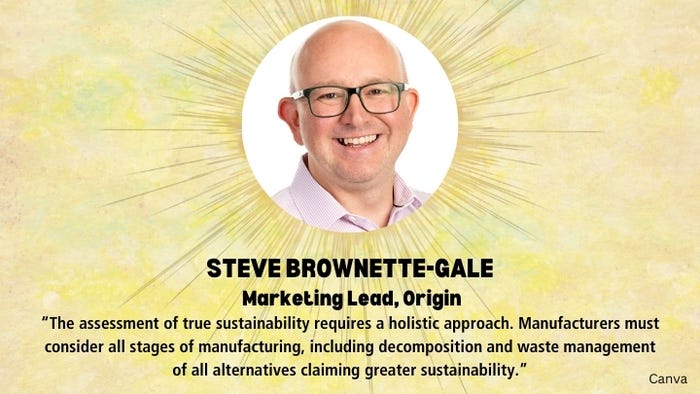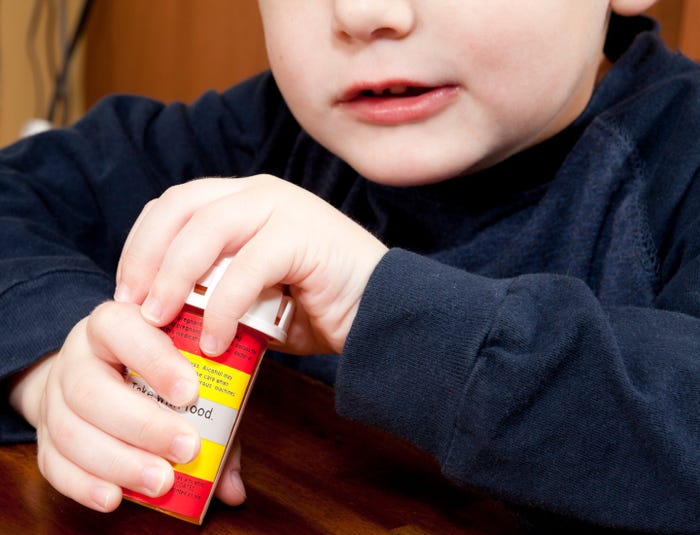Top Pharmaceutical Packaging Trends for 2024
Four market trends are set to significantly impact packaging departments for pharmaceutical manufacturers. Are you prepared?

In the rapidly evolving landscape of the pharmaceutical industry, staying ahead of emerging trends is crucial for businesses to thrive.
With the start of 2024, and in an era marked by technological advancements, regulatory change and shifting consumer demand, several trends are poised to shape the trajectory of the pharmaceutical market.
Here is a comprehensive look into what stakeholders can expect over the next year.

pe-art / iStock via Getty Images Plus
1. The growing trend of pharmacogenomics (PGx).
Deaths due to adverse drug reactions (ADRs) have given rise to growing research in personalized medicine. Known as pharmacogenomics (PGx), this innovative form of healthcare aims to tailor treatments at an individual level by providing genetically customized medicines and dosages. Not only does this enhance treatment efficacy but it also minimizes ADRs.
A current example of genome tracing projects includes genetic tests before the administering of HIV medication. However, PGx use is expanding across the healthcare system of the United States, including within community pharmacies, signifying a growing trend within the industry.
As personalized medicine becomes more prevalent, so too will the need for unique packaging solutions. There will be a heightened need for contract packaging firms to meet the increasingly specific requirements of tailored pharmaceutical packaging.
We’ll also see increasing demand for personalized parenteral products and packaging, including personalized patient information leaflets (PILs). More flexibility and efficiency in supply chain processes will be needed to respond to growing low-volume manufacturing requirements of tailored medicine packaging.
However, the integration of personal and sensitive medical information into personalized packaging necessitates robust security measures. With the intelligent pharmaceutical packaging industry growing rapidly, promising a predicted compound annual growth rate (CAGR) of 9% between 2020 and 2025, innovation and technological advancements in packaging could be the answer to safeguarding personal data.
Examples include scannable QR codes and Near Field Communication (NFC) technology, both of which enable users of smartphones to scan product packaging and be served the relevant information about the medicine to which it is attached.

cienpies / iStock via Getty Images Plus
2. The rising use of sustainable packaging materials.
Sustainability will continue to take center stage in pharmaceutical packaging, aligning with the global shift towards eco-conscious practices. There is a critical need for the industry to embrace this trend in 2024 as more people are aligning lifestyle choices with sustainability metrics.
A recent survey revealed more than half of American respondents would choose sustainable packaging over plastic, with some willing to spend 5% more.
And the pharmaceutical industry is rising to the challenge, with the market for sustainable pharma packaging expected to see a CAGR of 15.4% by 2027.
With customers prepared to vote with their dollars, we’ll be seeing more brands experiment with environmentally friendly packaging materials in the coming year. Compostable packaging, for example, has been gaining traction. Moreover, Bayer recently announced it had joined the Blister Pack Collective, using dry molded fiber technology to help cut 100,000 tonnes of plastic medicine packaging used by industry each year in partnership with PulPac.

Despite these advancements, the assessment of true sustainability requires a holistic approach. Manufacturers must consider all stages of manufacturing, including decomposition and waste management of all alternatives claiming greater sustainability.
This starts with materials being selected based on how easily they can be reused or recycled into new products with as little waste as possible, as well as how resource-intensive or carbon-heavy production is. While paper-based packaging ranks favorably among consumers for sustainable promises, for example, it has been accused of exacerbating water loss and climate change.
Therefore, packaging manufacturers will need to question whether sustainable packaging alternatives can satisfy all these criteria.
Post-consumer regrind (PCR) is increasingly being used in packaging as a sustainable alternative around the world. However, there are still significant challenges to be faced when in the US recycling plastic is prohibitively expensive.
Benefits of PCR include reducing waste, lowering carbon footprints, and promoting a circular economy in the industry. With plastic’s proven track record for safeguarding the integrity of medicines through its inert qualities and ability to keep medicine free from bacteria, moisture, and UV ray damage, it is a favorite in pharma.
For 2024, we can expect to see continued growth in this area, with the PCR market forecast to have a CAGR of 8.3% by 2028. The Biden administration recently proposed a sustainable procurement policy that will favor recycled-content products in all purchases made by the government.
There is no doubt that sustainability in packaging will be a continued focus for the industry in 2024 and beyond.

Iaremenko / iStock via Getty Images Plus
3. Continued funding of blockchain technology.
The pharmaceutical industry is being driven by complex advancements in blockchain technology, enhancing supply chain management and improving patient health outcomes. Blockchain’s contribution towards the fight against the counterfeit pharmaceutical industry is vital and 2024 will see the continued investment in this field.
Blockchain provides a tamper-proof and distributable database that scrupulously denotes all transactions and movements of pharmaceutical products throughout the global supply chain, giving visibility into every stage and offering unparalleled transparency.
Enhanced track-and-trace capabilities monitor each step from drug development through to the end user. Benefits include eliminating inefficiencies, pre-empting and rectifying drug shortages, ensuring product quality, and defending against the counterfeit pharmaceutical market.
With the growing prevalence and enhanced capabilities of artificial intelligence (AI) technology, its use in conjunction with blockchain technology will further facilitate real-time monitoring and securing of supply chains by spotting irregularities and potential risks as and when they happen.
Today’s advanced technology gives power to those wishing to use it for good, but also to those with bad motives. Unfortunately, counterfeit pharmaceuticals are on the rise globally.
Blockchain is part of the solution to this problem with its ability to serialize each drug with an unchangeable and unique identifier tag. This allows stakeholders to verify a drug’s authenticity and track its origin, preventing the distribution of counterfeit drugs into the market.
4. Revolutionary drug delivery systems.
Antimicrobial resistance (AMR) poses a pervasive danger to worldwide public health having directly caused an estimated 1.27 million deaths and nearly 5 million indirectly. This critical issue is a fundamental driving force for ongoing research and developments, affecting all stakeholders universally.
One of the main drivers of AMR is the often-unintended misuse of drugs by patients, known as patient non-adherence, including forgetfulness, avoiding unpleasant side effects, cost, lack of education, and a false sense of security when symptoms ease.
Packaging design is evolving to address these issues with inventions such as pre-filled syringes, auto-injectors, and inhalers, making it easier for patients to take prescribed medicines.
Other innovations in smart packaging solutions deliver patients with trackers and reminders to take medications on time and to completion. Smart blister packs are one example of this, with a built-in ability to capture use-related data and send reminders of when the next dosages are due.

Pears2295 / iStock via Getty Images Plus
The required commitment to child-resistant packaging (CRP) creates another barrier to patient adherence for those with disabilities such as blindness or reduced dexterity.
But innovations in CRP are attempting to remedy this, with bottle lids that need moistening to be opened, laser perforation in packaging requiring two-way tearing motions, zip lock and flap designs, and technology designed to distort depth perception, which confuses children.
2024 will also see the rise of biologics, diverse medical products or medicines derived from living organisms that may be used to treat a variety of medical conditions for which there are no other treatment options available.
The market is forecast to make at least $120 billion in sales by 2027 and ongoing development into new drug delivery systems and their packaging will be necessary to accommodate its growth, necessitating especially flexible filling and packaging equipment while safety concerns will demand innovation in containment solutions and barrier technologies.
Manufacturers who hope to thrive in this fast-evolving field must offer smart value-added features to strike exclusive deals in response to demand.
Due to the high worth of biotech products, the counterfeit market aims to claim a share of the earnings. Ensuring security and transparency in the supply chain remains pivotal for packaging manufacturers and the pharmaceutical industry at large, prompting the sweeping integration of defensive measures within smart packaging designs.
About the Author(s)
You May Also Like




